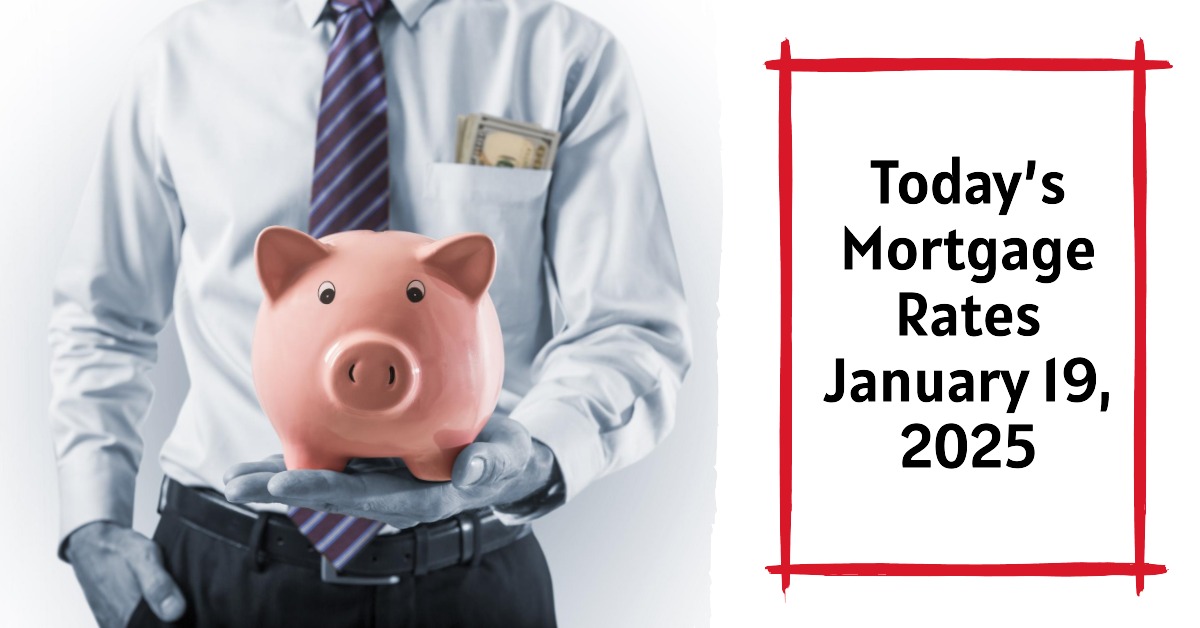A
s of January 19, 2025, mortgage rates have dipped slightly, averaging around 6.70%, a modest decrease compared to previous months. This drop in rates offers hope for potential homebuyers and those considering refinancing, primarily driven by unexpectedly cool core inflation data. However, it's essential to recognize the unpredictable nature of mortgage rates due to ongoing economic developments.
Current Average Rates: Today’s average rates are around 6.70%. Decrease in Rates: A slight drop due to cool core inflation. Volatile Future: Mortgage rates may rise again depending on economic factors. Rate Types: Various loan types have different average rates, significantly affecting monthly payments.
As of January 19, 2025, several platforms provide an updated overview of mortgage rates, detailing average rates specific to different types of loans. Here’s a look at today’s mortgage rates based on credible sources like Zillow:
Mortgage Type Average Rate Today
30-Year Fixed 6.69%
20-Year Fixed 6.32%
15-Year Fixed 5.93%
7/1 Adjustable Rate Mortgage (ARM) 7.01%
5/1 Adjustable Rate Mortgage (ARM) 6.98%
30-Year FHA 6.29%
30-Year VA 6.06%
Refinance rates are similarly aligned with purchase rates, providing insight into how potential lenders are positioning mortgages in the current market:
Mortgage Refinance Type Average Rate Today
30-Year Fixed Refinance 6.71%
20-Year Fixed Refinance 6.45%
15-Year Fixed Refinance 5.99%
7/1 ARM Refinance 7.25%
5/1 ARM Refinance 7.24%
30-Year VA Refinance 6.32%
The recent decrease in mortgage rates can be attributed to a variety of broad economic indicators and specific regulatory measures taken by the Federal Reserve. Over the last several months, fluctuations in inflation have caught the attention of economists and consumers alike.
While today’s lower mortgage rates may sound encouraging, it's crucial to maintain a cautious outlook. These rates reflect a momentary drop, but the volatility of the economic environment could steer them upward again. Factors such as global economic pressures, domestic inflation rates, and consumer behavior will play significant roles in the ongoing fluctuations.
A Historical Perspective
To gain a clearer understanding of today's mortgage rates, it’s enlightening to look back at their historical trajectory. Here are some pivotal moments in mortgage rate history over the last few years:
2020 & 2021: During the pandemic, mortgage rates reached historic lows, with many borrowers securing loans below 3%. This encouraged a home-buying frenzy as homeowners sought to take advantage of these low rates.
2022: In response to rising inflation, the Federal Reserve raised interest rates multiple times to curb spending and economic growth. Consequently, mortgage rates surged to levels not seen in years, making homeownership more challenging for many prospective buyers.
As we enter 2025, we see that mortgage rates are stabilizing in the low to mid-6% range. This indicates a potential leveling off that could allow buyers some breathing room and re-establish market confidence.
Factors Influencing Mortgage Rates
A spectrum of factors influences mortgage rates, making them a function of broad economic conditions and individual borrower profiles. Below are some critical drivers of mortgage rates:
Economic Indicators: Key economic indicators, such as unemployment rates and GDP growth, influence lender confidence and risk assessments.
Inflation: Inflation impacts the purchasing power of consumers and, consequently, the rates at which lenders are willing to extend credit.
Federal Reserve Policy: The decisions made by the Fed regarding interest rate adjustments directly influence mortgage lenders' borrowing costs and, subsequently, the rates offered to consumers.
Understanding these factors interconnects in a complex relationship is vital for discerning mortgage rate movements. Inflation remains one of the most significant challenges during this period. While the recent cooling in core inflation (down to 2.9% from the previous year’s peak) is promising, broader inflationary pressures could complicate efforts to stabilize mortgage rates.
The delicate balance between increasing rates to combat inflation and maintaining affordable borrowing costs is an ongoing challenge for the Fed, influencing the direction of mortgage rates in 2025.
As we transition further into 2025, the outlook for mortgage rates remains tentative. Various forecasts suggest that while rates may decline over the year, the extent of that decline will remain moderate. It is imperative to consider several pivotal factors that may steer rates in the near future:
Economic Stability: A steady economic environment generally favors declining mortgage rates.
Federal Reserve Actions: Continued adjustments in the federal funds rate could either sustain low mortgage rates if decreases in inflation persist or lead to increases if inflation proves difficult to manage.
The Impacts of Mortgage Rate Changes on Buyers
The current low levels of mortgage rates can open doors for first-time homebuyers and those looking to refinance existing loans. Understanding how these rates translate into actual savings is essential. For instance, monthly payments can fluctuate widely based on the loan amount, type, and term.
Example Calculation
Let’s take a look at how the rates today might affect a new mortgage:
Suppose you plan to purchase a home valued at $344,400 with a 20% down payment:
Loan Amount: 80% of $344,400 = $275,520
30-Year Fixed Rate at 6.69%:
Monthly Payment = $1,779
15-Year Fixed Rate at 5.93%:
Monthly Payment = $2,206
These calculations illustrate how smaller rate differences can lead to significant differences in monthly payments, affecting buyers' decisions on mortgage terms and affordability.
Navigating the Mortgage Market
Given these complexities, potential borrowers must stay informed about their mortgage options. With various products available—from conventional loans to government-backed loans—buyers need to assess their financial situations, future plans, and market conditions comprehensively.
Types of Mortgages
Here’s a broader understanding of mortgage types and their characteristics to help potential borrowers make informed decisions:
Fixed-Rate Mortgages: Offer stability as the interest rate remains constant throughout the loan's life. Ideal for those valuing predictability in monthly payments.
Adjustable-Rate Mortgages (ARMs): Initially start with lower rates, which may become variable after the fixed period. These can benefit borrowers who plan to relocate or refinance before the adjustment period.
Understanding Your Financial Impact
For potential buyers eyeing lower rates, it’s crucial to evaluate your financial health. Maintaining a good credit score, saving for a larger down payment, and managing existing debts will enhance your ability to secure favorable mortgage rates.
Conclusion
Understanding today’s mortgage rates is integral for anyone considering homeownership or refinancing plans. With the current average rates showing a slight decrease, this may be an opportune moment for borrowers. However, the uncertainty around economic factors, inflation, and future Federal Reserve actions make it essential to stay vigilant and informed.













